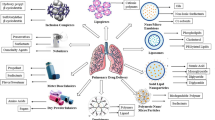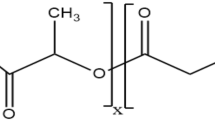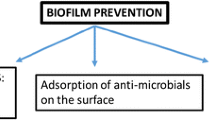Abstract
In the emerging research, utilization of gums as pharmaceutical excipient in novel drug delivery systems has become a fascinating field due to its widespread accessibility, non-toxicity and reasonable prices. Through pulmonary drug delivery, various respiratory disorders like chronic obstructive pulmonary disease, lung cancer and asthma can be treated effectively.
Due to their high bioavailability and lack of first-pass effect in a variety of pharmaceutical formulations, including nanoparticles, hydrogels, scaffolds, nanocrystals, microspheres, thickeners in oral liquids and hydrocolloids in suspensions, gums derived from plants have recently attracted a great deal of interest in pulmonary drug delivery. Gums are an appropriate excipient used in various pharmaceutical formulations because of its viscosity, adhesive nature, interfacial properties and stability.
Our present book chapter focuses on natural gum importance in pulmonary drug delivery system (PDDS), classification of gums, an overview of pharmaceutically important gums like Abelmoschus gum, cashew gum, Albizia gum, tamarind gum, almond gum, Odina gum, Ferula gum in treating respiratory diseases.
Access this chapter
Tax calculation will be finalised at checkout
Purchases are for personal use only
Similar content being viewed by others
References
Abraham A, Mathew L, Samuel S (2014) Pharmacognostic studies of the fruits of Terminalia bellirica (Gaertn.) Roxb. J Pharmacogn Phytochem 3(2):45–52
Adetuyi FO, Dada IBO (2014) Nutritional, phytoconstituent and antioxidant potential of mucilage extract of Okra (Abelmoschus esculentus), water leaf (Talinum triangulare) and Jews mallow (Corchorus olitorius). Int Food Res J 21:2345–2353
Ahmad M, Sultana S, Fazl-i-Hadi S, Ben Hadda T, Rashid S, Zafar M, Yaseen G (2014) An ethnobotanical study of medicinal plants in high mountainous region of Chail valley (district swat-Pakistan). J Ethnobiol Ethnomed 10:36
Alvarez-Lorenzo C, Blanco-Fernandez B, Puga A, Concheiro A (2013) Crosslinked ionic polysaccharides for stimuli-sensitive drug delivery. Adv Drug Deliv Rev 65:1148–1171
Amog PU, Manjuprasanna VN, Yariswamy M (2016) Albizia lebbeck seed methanolic extract as a complementary therapy to manage local toxicity of Echis carinatus venom in a murine model. Pharm Biol 54(11):2568–2574
Anand AV, Divya N, Kotti PP (2015) An updated review of Terminalia catappa. Pharmacogn Rev 9(18):93–98
Anushiravani M, Azad FJ, Taghipour A, Mirsadraee M, Afshari JT (2020) The effect of Plantago major seed and almond gum on refractory asthma: a proof-of-concept study. J Herb Med:19, 100,297
Avoseh ON, Mtunzi FM, Ogunwande IA, Ascrizzi R, Guido F (2021) Albizia lebbeck and Albizia zygia volatile oils exhibit anti-nociceptive and anti-inflammatory properties in pain models. J Ethnopharmacol 268
Awakan OJ, Malomo SO, Adejare AA, Igunnu A et al (2018) Anti-inflammatory and bronchodilatory constituents of leaf extracts of Anacardium occidentale L. in animal models. J Integr Med 16(1):62–70
Baloch MP, Marri MY, Qaisrani MA (2013) Plants treasures, traditional knowledge and Baloch society. Bi-Annu Res J Balochistan Rev 28(1):1–5
Bhattacharya S, Bal S, Mukharjee RK, Bhattacharya S (1991) Rheological behavior of tamarind kernel powder suspension. J Food Eng 13:151–158
Chukwuma EC, Soladoye MO, Feyisola RT (2015) Traditional medicine and the future of medicinal plants in Nigeria. J Med Plants Stud 3(4):23–29
Deshmukh T, Patil P, Thakare V, Tekade B et al (2011) Evaluation of binding properties of Butea monosperma Lam, Gum in tablet formulation. Int J Drug Discov 1(3):128–133
Dinda SC, Mukharjee B (2009) Gum cordia—a new tablet binder and emulsifier. Acta Pharm Sci 51(2):189–198
Dionísio M, Grenha A (2012) Locust bean gum: exploring its potential in biopharmaceutical application. J Pharm Bioallied Sci 4(3):175–185
Doharey V, Sharma N, Bindal MC (2010) Assessment of the suspending properties of Cordia gharaf gum on paracetamol suspension. Sch Res J 2:510–517
Eigner D, Scholz D (1999) Ferula assa-foetida and Curcuma longa in traditional medical treatment and diet in Nepal. J Ethnopharmacol 67:1–6
Gigakatal Mahmudi I, Adnyana K, Kurnia N (2017) Anti-asthma activity of tamarind pulp extract (Tamarindus Indica L.). Int J Curr Pharm Res 9(3):102–105
Gupta R, Gupta GD (2015) A review on plant Cordia obliqua Willd. (Clammy cherry) Pharmacogn Rev 9(18):127–131
Haider M, Zhong L (2014) Ethno-medicinal uses of plants from district Bahawalpur, Pakistan. Curr Res J Biol Sci 6:183–190
He Y, Wang Q, Ye Y, Liu Z, Sun H (2020) The ethnopharmacology, phytochemistry, pharmacology and toxicology of genus Albizia: a review. J Ethnopharmacol 2020:257
Hussain A, Qureshi F, Abbas N, Arshad MS, Ali (2017) An evaluation of the binding strength of okra gum and the drug release characteristics of tablets prepared from it. Pharmaceutics 9(2):20
Ishtiaq M, Mahmood A, Maqbool M (2015) Indigenous knowledge of medicinal plants from Sudhanoti district (AJK), Pakistan. J Ethnopharmacol 168:201–207
Jani GK, Shah DP, Prajapati VD, Jain VC et al (2009) Gums and mucilage’s: versatile excipients for pharmaceutical formulations. Asian J Pharm 4(5):308–322
Jian S, Yadav SK, Patil UK (2008) Preparation and evaluation of sustained release matrix tablet of furosemide. Res J Pharm Technol 1:374–376
Kamboj VP (1988) A review of Indian medicinal plants with interceptive activity. Indian J Med Res:336–355
Khan SW, Khatoon SU (2008) Ethnobotanical studies on some useful herbs of Haramosh and Bugrote valleys in Gilgit, northern areas of Pakistan. Pak J Bot 40:43
Kim HS, Kacew S, Lee BM (1999) In-vitro chemopreventive effects of plant polysaccharides (Aloe barbadensis Miller, Lentinus edodes, Ganoderma lucidum and Coriolus versicolor). Carcinogenesis 20:1637–1640
Kokate CK, Purohit AP, Gokhale SB (2009) A text book of pharmacognosy, 29th edn. Nirali Prakashan Publication, Pune
Kooiman P (1961) The constitution of Tamarindus-amyloid. Recueil des Travaux Chimiques des Pays-Bas 80(8):849–865
Kumar R, Patil M, Patil S, Paschapur M (2009) Evaluation of Abelmoschus esculentus mucilage as suspending agent in paracetamol suspension. Int J Pharm Tech Res 1:658–665
Kumar S, Bansal P, Gupta V, Sannd R, Meda M (2010) The clinical effect of Albizia lebbeck stem bark decoction on bronchial asthma, vol 2, pp 48–50
Lankalapalli S, Sandhala D (2013) A review on natural gums and their use as pharmaceutical excipients. Int J Pharm Sci Res 10(12):5274–5283
de Lima GF, Ferreira RM, Nogueira TR (2021) Effects of Anacardic acid monoene on the respiratory system of mice submitted to acute respiratory distress syndrome. Rev Bras Farmacogn 31:232–238
Liu L, Fishman ML, Kost J, Hicks KB (2003) Pectin-based systems for colon-specific drug delivery via oral route. Biomaterials 24:3333–3343
Mahendra P, Bisht S (2012) Ferula asafoetida: traditional uses and pharmacological activity. Pharmacogn Rev 6(12):141–146
Mahmudah R’a, Ketut Adnyana I, Kurnia N (2017) Anti-asthma activity of tamarind pulp extract (Tamarindus indica L.). Int J Curr Pharm Res 9(3):102–105
Mahran, El-Alfy, Ansary (1975) A phytochemical study of the gum and resin of Afghanian asafoetida. Bull Fac Pharm 12:119–132
Malviya R, Sundram S, Fuloria S (2021) Evaluation and characterization of tamarind gum polysaccharide: the biopolymer. Polymers (Basel) 13(18):3023
Mankala SK, Nagamalli NK, Raprla R, Kommula R (2011) Preparation and characterization of mucoadhesive microcapsules of gliclazide with natural gums. S J Pharm Sci 4(1):38–48
Meka VS (2012) Characterization and in vitro drug release studies of a natural polysaccharide Terminalia catappa gum (Badam gum). AAPS PharmSciTech 13(4):1451–1464
Mothe, Cheila Goncalves, Jaqueline Souza de Freitas (2013) Extraction, purification of cashew polysaccharide and characterization by GC-MS, FTIR, NMR, TG/DTG
Niaz S, Bokhari TZ, Sherwani SK, Younis U, Dasti AA (2013) Ethnobotanical study of some medicinal plants of thal desert Punjab, Pakistan. Int J Pharm Res Biosci 2:31–41
Ogaji IJ, Okafor IS, Hoag SW (2013) Grewia gum as a film coating agent in theophylline tablet formulation: properties of theophylline tablets coated with grewia gum as a film coating agent. J Pharm Bioallied Sci 5(1):53–60
Papp N, Bartha S, Boris G, Balogh L (2011) Traditional uses of medicinal plants for respiratory diseases in Transylvania. Nat Prod Commun 6:1459–1460
Partially Hydrolyzed Guar Gum (PHGG) for Amelioration of Chronic Obstructive Pulmonary Disease (2021) National Library of Medicine (US). Available via https://clinicaltrialsgov/ct2/show/NCT05126654. Accessed 19 Nov 2021
Prabhanjan H (1989) Studies on modified tamarind kernel powder. Part I: preparation and physicochemical properties of sodium salt of carboxymethyl. Derivatives 41:409–414
Salehi B, Kirkin C (2020) Antioxidant, antimicrobial, and anticancer effects of Anacardium plants: an ethnopharmacological perspective. Front Endocrinol (Lausanne) 11:295
Saro**i S, Kuman D, Manavelins R, Jayanthi B (2010) Effect of natural almond gum as a binder in the formulations of diclofenac sodium tablets. Int J Pharm Sci 1(3)
Seabrook WB (1927) Adventures in Arabia among the Bedouins, Druses, whirling dervishes and Yezidee devil worshipers. Blue Ribbon Book, New York, pp 99–105
Sumathi S, Alok R (2002) Release behavior of drugs from tamarind seed polysaccharide tablets. J Pharm Pharmaceut Sci 5(1):12–18
Tareen RB, Bibi T, Khan MA, Ahmad M, Zafar M, Hina S (2010) Indigenous knowledge of folk medicine by the women of Kalat and Khuzdar regions of Balochistan, Pakistan. Pak J Bot 42:1465–1485
Tekade B, Chaudhari Y (2013) Gums and Mucilages: excipients for modified drug delivery system. J Adv Pharm Edu Res 3(4):359–367
The Ayurvedic Pharmacopoeia of India (2001) Part-I vol 3. Government of India Ministry of Health and Family Welfare Department of Ayurveda Yoga Naturopathy Unani Siddha and Homoeopathy New Delhi, pp 201–202
Tomoda S, Gonda K, Yamada H (1989) Anticomplementary and hypoglycemic activity of Okra and Hibiscus mucilages. Carbohydr Res 190:323–328
Wang Z, Niu G, Chen X (2013) Polymeric materials for theranostic applications. Pharm Res 1:1–19
Wang K, Li M, Wen X, Chen X (2018) Optimization of ultrasound-assisted extraction of okra (Abelmoschus esculentus (L.) Moench) polysaccharides based on response surface methodology and antioxidant activity. Int J Biol Macromol 114:1056–1063
Author information
Authors and Affiliations
Editor information
Editors and Affiliations
Rights and permissions
Copyright information
© 2023 The Author(s), under exclusive license to Springer Nature Singapore Pte Ltd.
About this chapter
Cite this chapter
Umamaheswari, A., Vijayalakshmi, M., Raj, S.B., Chellappan, D.K., Prabu, S.L. (2023). Gum-Based Drug Delivery Systems. In: Dureja, H., Adams, J., Löbenberg, R., Andreoli Pinto, T.d.J., Dua, K. (eds) Natural Polymeric Materials based Drug Delivery Systems in Lung Diseases. Springer, Singapore. https://doi.org/10.1007/978-981-19-7656-8_8
Download citation
DOI: https://doi.org/10.1007/978-981-19-7656-8_8
Published:
Publisher Name: Springer, Singapore
Print ISBN: 978-981-19-7655-1
Online ISBN: 978-981-19-7656-8
eBook Packages: Chemistry and Materials ScienceChemistry and Material Science (R0)




